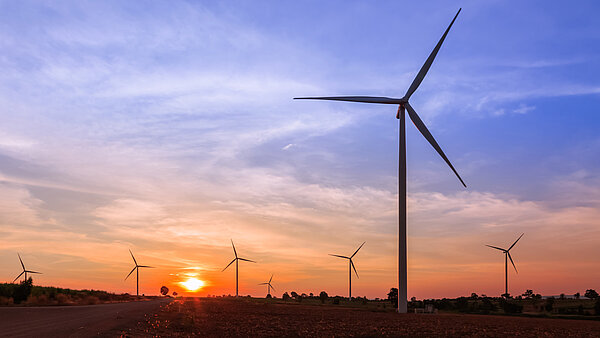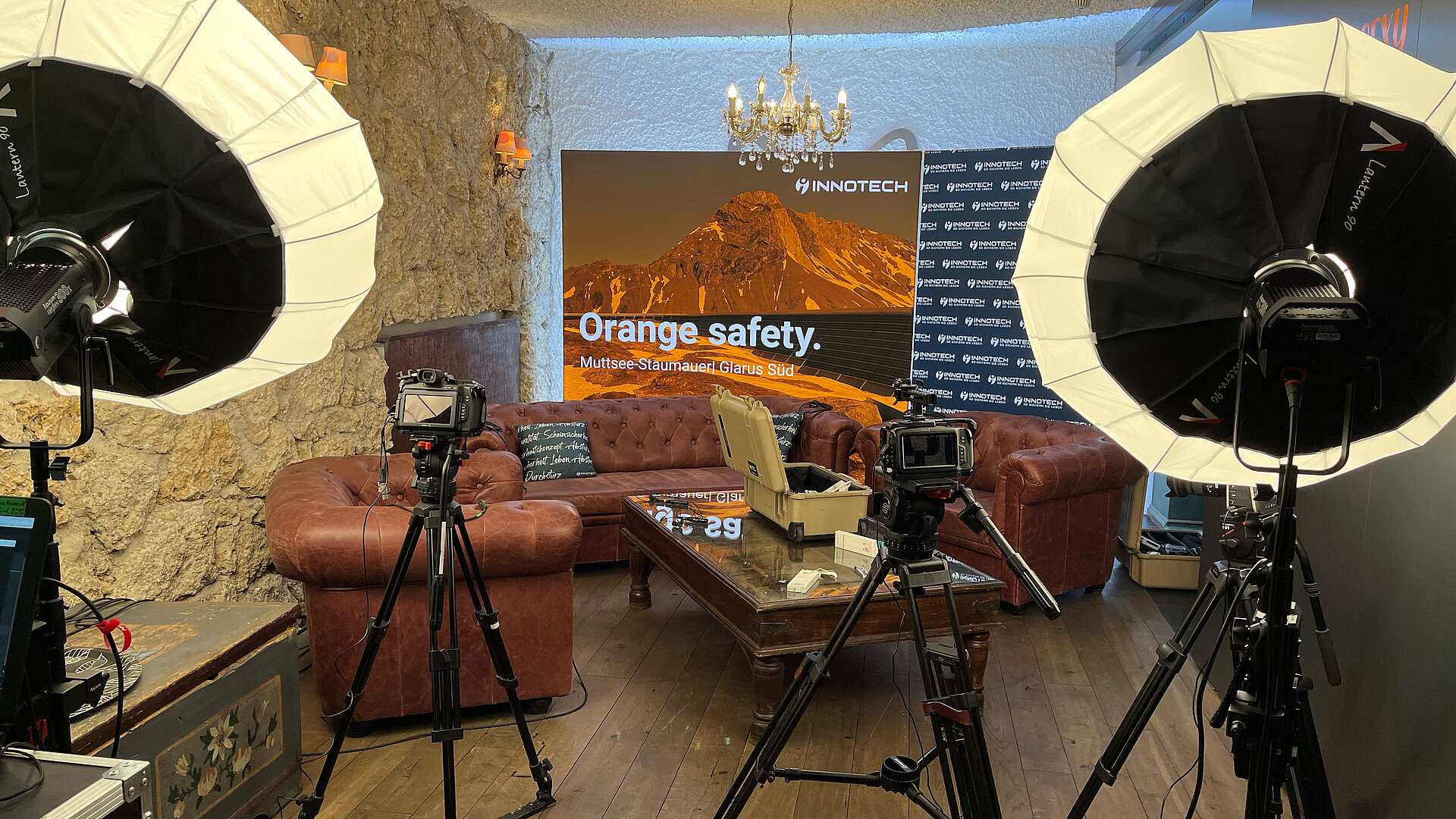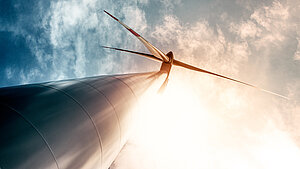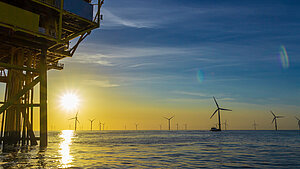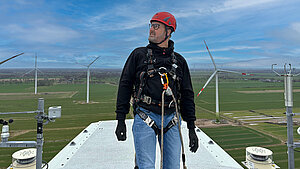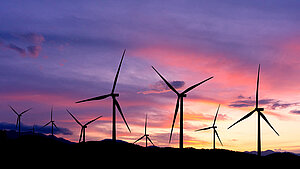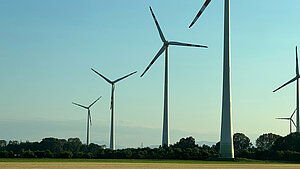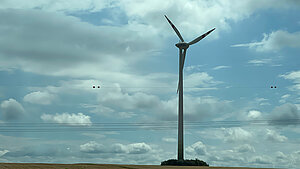This time, in the still fresh INNO|talk format, Maximilian Scherer, INNOTECH’s Marketing Manager, invited two experts from the sectors of wind power and fall protection systems for wind turbines, in addition to INNOTECH CMO Wolfgang Stadlbauer. The two experts who made up the discussion panel were Marc Wollschläger, Head of Sales BWTS GmbH, and Michael Pett, Sales Manager of INNOTECH Germany. With the continuously growing importance of the wind power industry, modern safety systems for these exposed workplaces are coming increasingly under the spotlight. During the INNO|talk Maximilian Scherer takes us through the experiences and insights of Wolfgang Stadlbauer, Marc Wollschläger, and Michael Pett. In addition they discuss the specific challenges in protecting service technicians working on wind turbines. They particularly emphasise the necessity for professional systems, without which the employees’ health and protection of life could not be ensured.
Especially in recent months, renewable energies have increasingly come to the forefront worldwide, and wind power plays an intrinsic role in this. Wind turbines are in a state of continuous development as well; the motto here is: ever taller and more efficient. Accordingly, safety systems for these sectors must also keep pace with this development, in order that service technicians are protected in the best possible way during their dangerous work. For this reason, INNOTECH constantly interacts with wind turbine operators, as well as training institutions in this sector, and continuously further develops its systems and products.
In the talk - challenges and dangers from wind power
During the discussion, Marc Wollschläger and Michael Pett provided very interesting insights into practical reality. In the case of wind turbines, there are in fact several danger areas, and these therefore need to be protected professionally. This is also mandated by law. Although all operators fulfil the basic legal requirements and minimum standards in terms of safety, Michael Pett very often observes potential for improvement. He would like to see a continuous solution in which the workers attach once only, and are then protected continuously – without having to detach and re-attach themselves from time to time. For optimum safety, he sees the solution as rail systems with runners which do not jam, combined with redundant anchor points. In this way, the service technicians are able to concentrate fully on their work, because they know that they are optimally protected at all times.
From the base right up to the nacelle
Even though no two wind turbines are the same, basically it is possible to define three work routes or areas requiring access by service technicians for maintenance and servicing tasks:
The ascent
The nacelle or turbine housing
The roof and the ascent from the nacelle onto the roof
Each of these three areas presents its own challenges in terms of safety. For the ascent or descent the workers must – if no lift is present – use a ladder to overcome a height difference between 100 and 120 metres. And with all equipment, materials, and tools, at that. In order that the workers can rest appropriately, there is a platform every 20 to 25 metres. And the transit to this platform must be performed in safety. The experts are in full agreement here: The use of rail system allows a problem-free, safer ascent than is possible using lifeline systems – especially in terms of ergonomics and smooth operation – both very important aspects for such an exhausting activity.
And in the nacelle itself, the workers must be protected appropriately – especially when the hatch to the ladder or lift is opened, for example to accept tools, because this action too creates a fall risk area. Working on the roof of the nacelle also represents a great danger. The service technicians must perform their maintenance tasks or repairs on the rotor hub, for example, or on the turbine’s measurement equipment, in order that the generator can provide power optimally. Under certain conditions it can happen that the roof cladding is wet or even iced, and the conditions become very hostile indeed. Up at that height, all tools and any materials must also be secured, so that nothing can fall to earth and injure personnel on the ground. However, what matters most is that the workers can safely access all necessary areas.
For offshore and onshore wind turbines, the three work routes listed are similar but not identical. One major difference in that the base of an offshore wind turbine can be accessed only from a ship or helicopter. In addition the recovery or rescue of employees involved in an accident is generally even more difficult than for onshore wind turbines.

By loading this video, you accept Google's privacy policy.
Safety and rescue training sessions - succinctly explained during the expert discussion
In most cases, the service technicians always access the wind turbine in pairs. If one of the technicians has an accident or becomes unconscious, for example, then the other must immediately take all necessary steps for the best possible first aid and for instigating the rescue or recovery of his/her colleague. In order that this works perfectly even in such a stressful situation, all employees must be trained appropriately. This is why safety training sessions play such a central role in the wind power industry, when it’s a matter of significantly increasing the level of safety.
Time is of the essence here! Well performed evacuation exercises and the use of effective rescue measures are exactly what can significantly optimise the time factor in an emergency situation, because the individual steps are familiar and performed correctly. On a wind turbine, this can be the difference between life and death. In any case, these training sessions are also a legal requirement.
Innovation through cooperation
Continuous improvement of safety on wind turbines can come down to good collaboration between manufacturers of safety solutions, training institutions, and wind farm operators. This is because only well-founded feedback from those who use the fall protection system day in, day out enables the manufacturers to adapt their products and solutions accordingly, in order that they can be used intuitively. Because unfortunately here too practice repeatedly demonstrates that single anchor points or PPE cannot be used optimally. For INNOTECH such cooperation has always formed the basis for the ongoing further development and optimisation of their own fall protection systems which fulfil the specific requirements of actual use.
Summary
Working on or in wind turbines holds specific challenges and dangers which must be minimised through professional safety systems. Only the use of solutions optimally adapted to the actual requirements enables service technicians to be protected effectively from falls when performing their servicing and repair tasks. In addition, it must also be possible to use these fall protection systems optimally for rescue and recovery measures. However, this also presupposes well-founded education and training in the solutions, and in the form of safety and rescue training sessions for all workers. It is also important that the safety solution is not cumbersome when working, or complicated to use. Unfortunately, under such circumstances the solution is simply not used. And that is a huge and unnecessary safety risk.











